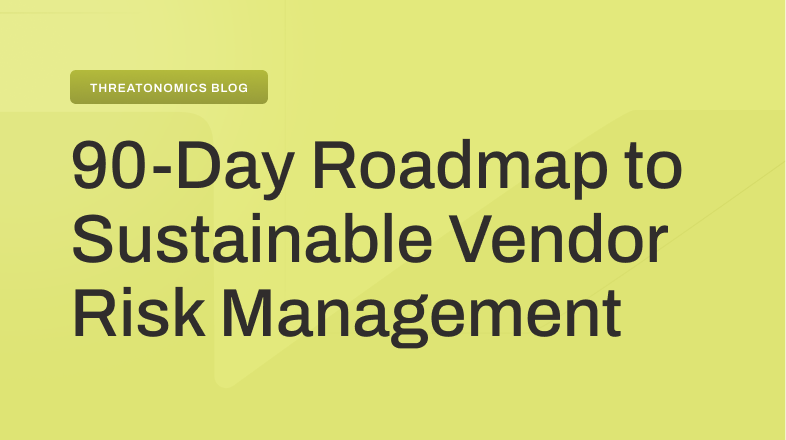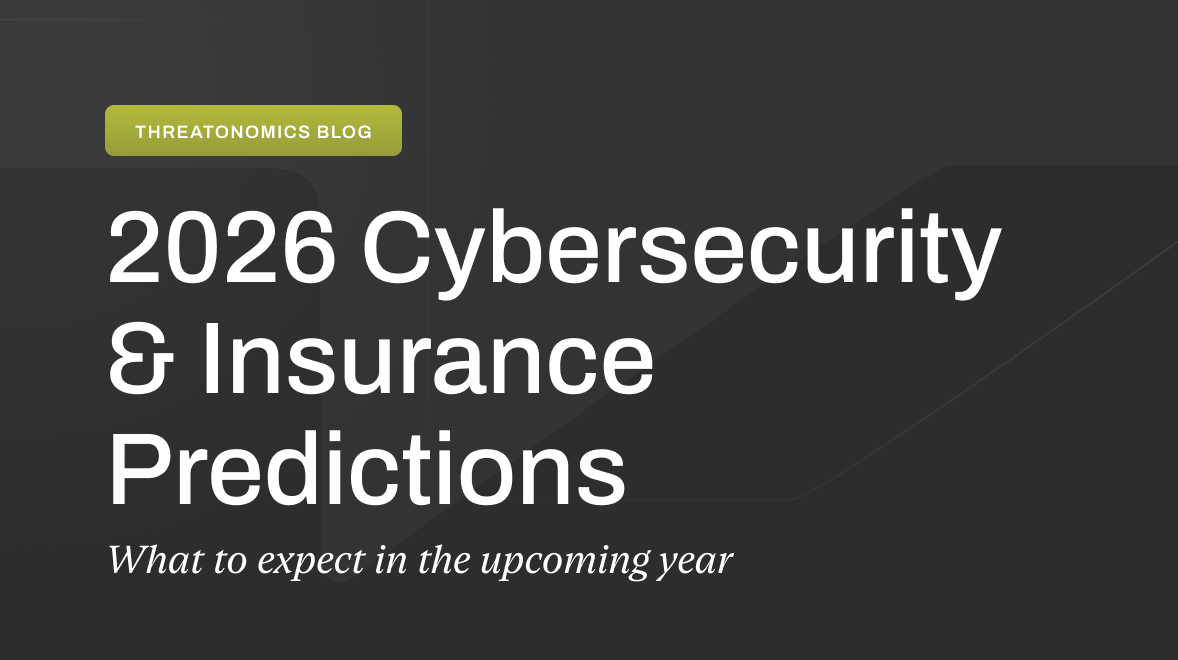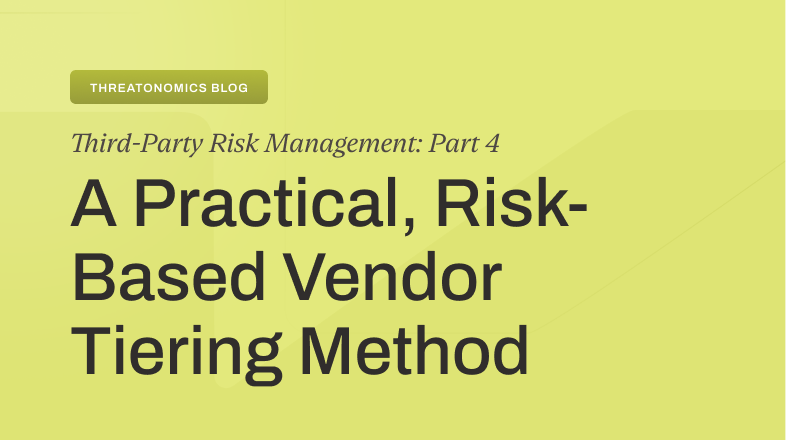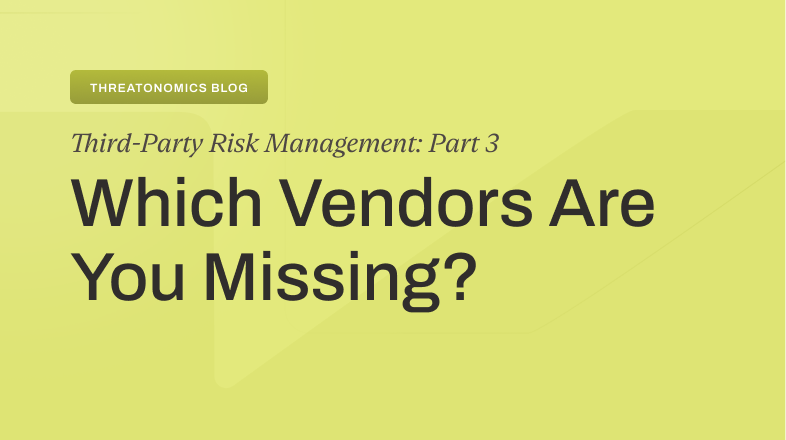You’re a CISO, bombarded from all sides. New vulnerabilities emerge daily, vendors tout countless security solutions, and your inbox overflows with security alerts.
Stay ahead of cyber risk with the latest intel on threats, best practices, and more.
Sign up for our Threatonomics newsletter to get the latest insights from our experts in cybersecurity, insurance, and risk management; all you need to achieve Cyber Resilience.
Subscribe NowYour skilled analysts are stretched thin, struggling to keep pace with the ever-evolving threat landscape. How do you make sense of it all? How do you prioritize investments, allocate resources, and make strategic decisions to effectively protect your organization’s critical assets?
It isn’t just about throwing more money or new technology at the problem. It’s about harnessing the power of human judgment, honed through rigorous training and structured techniques, to gain a clearer picture of future cyber risks and navigate the uncertainty with greater confidence. Enter superforecasting.
Jack Jones, chairman of FAIR Institute, and Doug Hubbard, president of Hubbard Decision Research, explain how to measure what matters on the new frontier of risk management. Listen to the Building Cyber Resilience podcast today.
What is Superforecasting?
Superforecasting is structured techniques and training to improve the accuracy of cybersecurity risk management and threat predictions. Imagine having a tool that anticipates cyber attacks, like meteorologists use barometers and wind vanes to predict storms. Superforecasting leverages data from various sources to estimate the likelihood and impact of cyber threats. While it’s not a guaranteed future, it provides an approximated forecast that tells you when you’ll need sunglasses or an umbrella. That’s the premise of superforecasting, an approach that empowers CISOs and security directors to make informed decisions in the face of constant cyber threats.
Beyond mere guesswork: Superforecasting isn’t fortune-telling. It’s a rigorous methodology drawing on structured prediction, calibration, and continuous feedback loops. Think of it as training your team to become superhuman cyber risk forecasters, honing their judgment through calibrated predictions and learning from past successes and failures.
Shining a light on high-impact threats: Forget generic risk scores. Superforecasting equips you to prioritize threats based on predicted likelihood and potential damage. Instead of scrambling to address every alert, you can focus on the attacks or risks that are most likely to impact your organization’s ability to deliver value.
Evaluating controls with expert eyes: No more relying on vendor brochures or marketing hype. Superforecasting leverages historical data and expert judgment to measure the effectiveness of different security controls, helping you allocate resources to solutions that mitigate the risks you face.
Superforecasting helps identify vulnerabilities within your chosen controls, select tools that will cover at-risk areas and mitigate gaps, and allocate a budget with clarity about where your dollar will matter most.
Optimizing resources for maximum impact: Budgets are tight, and every decision counts. Superforecasting empowers you to make defensible, data-driven decisions about where to invest your security budget. This tool provides insight to confidently identify and reallocate resources from ineffective solutions to proactive measures that address your most critical threats, maximizing your cyber defenses.
Traditional Risk Management Falls Short: Navigating the Fog of Cyber Uncertainty
Imagine you’re at the helm of your organization’s security, navigating a treacherous cyberstorm. Traditional risk management tools, your supposed lighthouse, flicker erratically, offering little guidance in the face of ever-shifting threats. As a CISO, you’re more like an extreme storm chaser than a meteorologist, diving headfirst into the eye of cyber storms. Traditional cyber risk management tools often lack the necessary data and context to navigate you through the incident unscathed, leading to potential financial losses. Here’s four reasons these tools fall short:
1. The Mirage of Prediction: Traditional methods rely heavily on historical data – a flawed compass in the dynamic world of cybercrime. Remember the Colonial Pipeline ransomware attack? Who could have predicted its crippling impact based on past incidents involving different industries and attack vectors? Cybercrime is constantly evolving, given a variety of social or economic factors. Traditional methods of relying on past incidents and old data is like trying to predict tomorrow’s weather with yesterday’s forecast– it does not consider new and changing information, and leaves you unprepared.
2. The Impact Illusion: Even when predicting an attack, quantifying its damage is like throwing darts blindfolded. The NotPetya wiper malware in 2017 devastated organizations across the globe, causing billions in losses. Yet, a similar attack on a different industry could have vastly different consequences. Traditional methods assign generic impact scores, offering little real-world insight into your business landscape. They rarely consider the real-life context of your industry, business size, and a million other factors that shape your overall security posture.
3. The Control Conundrum: Evaluating security controls is like testing life jackets in a swimming pool. They rely on controlled environments that fail to capture the real-world complexities of cyberattacks. Recall the recent Kaseya supply chain attack – seemingly robust security controls across multiple organizations were bypassed, exposing millions to risk. Traditional methods offer a false sense of security, leaving you vulnerable to the contingencies and unpredictability of real attacks. .
4. The Data Deluge: Traditional methods drown you in an ocean of threat intelligence reports, vulnerability assessments, and security alerts, often leading to alert fatigue. Modern CISOs still find themselves manually sifting through huge amounts of data, searching for t actionable insights and relevant alerts. This information overload and fatigue can lead even the most tactical security leaders to miss critical information, alerts or threats.
The Real-World Riptide: The recent Log4j vulnerability serves as a stark reminder of the importance of quickly patching and managing misconfigurations. Traditional threat-hunting methods quickly recognized the Log4j vulnerabilities as a high-risk issue once it became clear how widely used the software was. The situation triggered immediate alarm and swift response efforts even before extensive exploitation could begin. However, its widespread exploitation weakened major organizations across industries, exposing the limitations of conventional mitigation strategies.
CISO’s are facing a constant gamble, forced to make critical decisions with incomplete information, hoping your defenses will hold. Fortunately, there is a way to anticipate impending storms: Superforecasting.
Anticipate the Storm with Superforecasting
As a CISO using traditional methods, you’re stuck chasing storms on a bicycle with a thermometer instead of in a high-tech van. Traditional risk management tools leave CISOs and security directors to navigate mindlessly, with incomplete information, outdated methods, and uncontextualized data.
By harnessing the power of collective intelligence and rigorous forecasting techniques, Superforecasting empowers you to:
- See beyond the noise: Cut through the clutter of overwhelming data and focus on the threats that truly matter.
- Make informed decisions: Allocate resources based on predicted likelihood and potential impact, not just vendor hype or gut feeling.
- Proactively mitigate risks: Identify and prioritize high-impact threats before they materialize, enabling proactive defense strategies.
- Build resilience: Continuously learn and adapt your security posture based on ongoing predictions and feedback loops.
Remember, ‘superforecasting’ is not a magic crystal ball– it does not make perfect and clear predictions of the future, but offers a well-lit path through the fog of uncertainty. By embracing its principles and taking action, you can step out of the fog and confidently navigate the ever-changing cybersecurity landscape.
Getting Started with Superforecasting: Charting your Course to Cyber Resilience
Superforecasting is a robust method that requires strategic planning and action to implement and achieve. Here’s a roadmap to guide CISOs and security directors on their journey toward data-driven cyber risk management:
Lay the Foundation
- Build awareness: Educate your team about and their potential benefits for improved risk assessment–educate your team on finding the right object and method of measuring risk. It is very expensive to be precise, but not accurate. You must determine within the context of your organization how to calculate your value at risk (what you stand to lose.)
- Identify champions: Select motivated individuals to spearhead the initiative and champion its adoption within your organization.
- Assess your data landscape: Evaluate the availability and quality of data you need for accurate forecasting, like historical security incidents, threat intelligence, and vulnerability reports.
Start Small and Scale Up
- Select a pilot project: Choose a specific cybersecurity challenge, such as prioritizing vulnerability remediation or evaluating the efficacy of your security controls, to initiate your Superforecasting efforts.
- Assemble a forecasting team: Recruit diverse team members with relevant expertise and analytical skills to form your forecasting group.
- Train your team: Provide training on calibration techniques, judgment biases, and structured prediction methodologies. Consider external training programs or utilizing online resources.
Embrace Collaboration and Feedback
- Establish communication channels: Foster open communication within your forecasting team and across different departments within your organization.
- Incorporate feedback: Regularly review and refine your forecasts based on new data, expert judgment, and real-world outcomes.
- Celebrate successes: Recognize and reward positive outcomes achieved through Superforecasting, motivating continued engagement and improvement.
Seek External Support
- Identify external resources: Explore partnerships with universities, research institutions, or specialized consulting firms offering Superforecasting expertise.
- Leverage online communities: Engage with online communities of superforecasters and cybersecurity professionals for knowledge sharing and best practices.
- Stay updated on advancements: Continuously monitor the evolving field of Superforecasting and adapt your methods based on new developments and research findings.
Navigating Cyber Risk with Superforecasting
Superforecasting significantly improves cyber risk management and delivers clarity in the complex cybersecurity domain. This method combines structured techniques and human judgment, enabling CISOs to face evolving threats more confidently and accurately.
Traditional risk management tools, while valuable, need to be fully equipped to address the rapidly evolving nature of cyber threats, often leaving organizations exposed to new and unforeseen vulnerabilities. Superforecasting provides a more nuanced and proactive approach. Allowing CISOs to prioritize investments, allocate resources, and make strategic decisions based on predicted likelihood and potential impact.
To get started with super forecasting, CISOs should lay a strong foundation, start small and scale up, embrace collaboration and feedback, and seek external support. By following these steps, organizations can harness the power of superforecasting to build cyber resilience and stay ahead of emerging threats. Request a demo today and learn how Resilience can leverage your organization.








